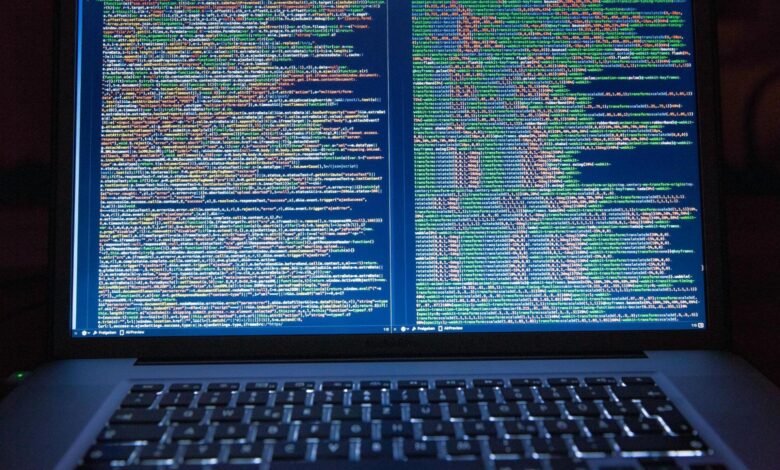
A clean report from a dApp audit feels like crossing the finish line, but the real race has only just begun. Once a contract address is public, attackers probe it nonstop, dependencies shift underneath, and market conditions expose entirely new economic angles.
The 2025 FailSafe Web3 Security Report reveals more than $3 billion in losses since 2024 at projects that had already passed at least one audit, indicating that “audited” is not synonymous with “secure.” A modern defense strategy, therefore, glues runtime monitoring, hot-patch pipelines, and a security-first culture onto that audit certificate.
The following guide maps out why this continuum matters and how to implement it. For teams wanting an end-to-end approach, Three Sigma’s dApp and front-end audits service covers both pre-launch checks and post-launch telemetry.
The Risks of Static Audits in Dynamic Environments
Code Drift After the Freeze
Security reviews occur on a specific commit hash. The moment that hash diverges, due to a minor UI tweak, a gas optimization, or a library upgrade, the stamp of approval begins to expire.
Loopring’s 2024 guardian-wallet breach shows how even non-contract components can reroute signed messages and unlock funds, bypassing perfectly sound on-chain logic.
Evolving Threat Models
Economic conditions move faster than audit cycles. A collateral type that was safe at a $2 billion market cap can become targetable flash-loan fodder at $200 million. Oracle drift, liquidity fragmentation, and MEV strategies mutate weekly, so invariants must be revalidated continuously.
Supply-Chain Volatility
Over 95% of front-end code is shipped via NPM, and new versions are released daily. A single poisoned dependency in June 2024 exfiltrated recovery phrases from thousands of wallets before defenders caught the malicious patch. Static audits rarely pin every indirect package, leaving a perpetual backdoor.
Governance Upgrades
Proxy patterns and timelocks enable DAOs to evolve, but every upgrade introduces new storage slots, modifiers, or role hierarchies that an earlier audit may have overlooked. Without runtime diff alerts, critical changes may skip security review entirely.
In short, the blockchain itself may be immutable, but everything around it is not.
Tools for Real-Time Smart Contract Monitoring
Enterprise-grade dApp stacks now weave together several layers of live telemetry:
| Monitoring Layer | What it Watches | Example Capability |
| On-Chain Event Nets | Tx patterns, state deltas | Forta agents simulate pending calls and block high-risk signatures in under 50 ms, boasting a 99% hack-detection rate across 11 million analyzed transactions. |
| Risk-Scoring Dashboards | Liquidity, code commits, social sentiment | CertiK Skynet recalculates a composite score for over 10,000 projects every few minutes, alerting exchanges when risk levels increase. |
| Policy Engines | Role changes, admin calls | Defender-style guardians pause or rate-limit functions when usage exceeds baselines. |
| Uptime and Gas Metrics | RPC latency, revert spikes | Prometheus exporters surface sudden 5× gas surges that often precede sandwich or grief attacks. |
| Specification Monitors | Live invariant checks | SMT-derived predicates run against real blocks, flagging balance discrepancies the moment an invariant fails. |
The 2025 ETSI PDL-033 standard formally endorses “online monitoring” as a mandatory post-deployment practice for smart-contract operators, citing the need to “identify anomalies, security breaches, or unexpected behavior through logging and alert systems.”
Security Patch Workflows After Deployment
Monitoring without a rapid patch lane is just noise. Mature dApp teams codify the following loop:
1. Alert Triage
- Severity auto-labels based on value-at-risk, exploitability, and on-chain confirmations;
- Playbooks map each alert type to responders: core devs, ops, comms, legal.
2. Mitigation Execution
- For proxy contracts, guardians trigger an emergency upgradeTo pointing to a patched implementation or temporarily disable vulnerable functions;
- Immutable contracts use circuit-breaker patterns (pause()) or liquidity-migration scripts;
3. Patch Development
- Hotfix branches include repeatable test cases derived from the exploit trace;
- CI runs static scanners plus scenario fuzzers to ensure the new change closes the specific path and introduces no regressions.
4. Review and Sign-Off
- At least two multi-sig signers outside the coding team approve mainnet push;
- Change-log diff is published so downstream indexers and front-ends sync ABI changes.
5. Post-Mortem and Bounty Loop
- Within 72 hours, publish a report detailing the root cause, timeline, and permanent controls;
- Feed lessons back into threat models and monitoring rules.
Teams that automate this pipeline cut mean-time-to-patch from days to hours.
Building a Post-Audit Security Culture
Technology solves half the problem, while people and processes complete it.
Security Champions Program
Assign at least one engineer per product squad as a security liaison. Champions attend weekly threat briefs, push dependency updates, and ensure new features come with threat model pull requests.
Shift-Left Mentality
Developers run lint and static-analysis hooks locally before raising a PR. If the build fails, they fix the issue rather than delegating it to auditors.
Blameless Retrospectives
Treat every incident as a system failure, not an individual lapse. Public post-mortems foster trust and encode knowledge for future hires.
Continuous Education
Sponsor regular capture-the-flag events, wallet-simulator drills, and red-team exercises. Real-time practice helps engineers recognize anomalies faster when they appear in production.
Incentivized Bug Bounties
Well-funded bounty programs crowdsource eyes between formal audits. Pair them with transparent disclosure processes to channel reports safely.
Compliance Alignment
Regulators increasingly demand runtime evidence. MiCA in the EU and state-level virtual-asset laws in the US reference “ongoing operational resilience” clauses that mirror DORA for traditional finance. Runtime telemetry exported into SOC 2 or ISO 27001 control logs satisfies auditors while demonstrating governance maturity.
When culture, process, and tooling align, security becomes a continuous service, not a point-in-time event.
Takeaway
A gold-seal dApp audit is the right starting point, but risk doesn’t freeze at deployment. Real-time monitors catch what static reviews can’t: code drift, governance upgrades, and edge-case economics that only emerge in production.
Coupled with rapid-response patch pipelines and a culture that prizes transparency, continuous monitoring slashes both incident probability and blast radius.
If your roadmap stops at launch day, your threat model is already outdated. Extend your security lifecycle with a provider that unifies audits, alerting, and remediation under one roof. Three Sigma’s dApp and front-end audits service keeps every click, signature, and opcode under live guard from day zero onward.






